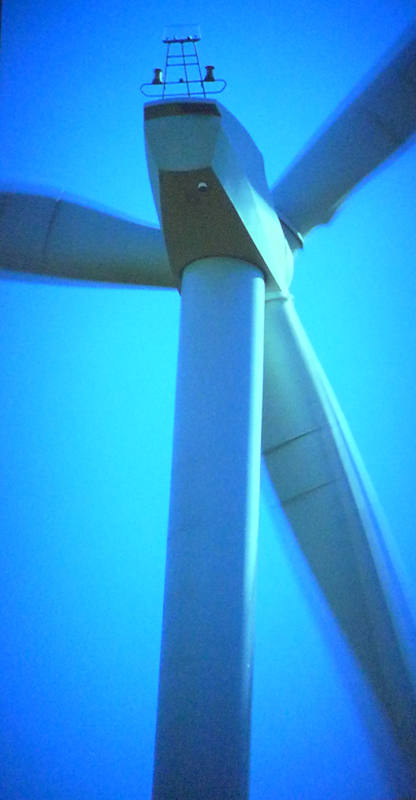Living Data
Big Picture Story 08:
Loss and hope
It's much, much later than you think. This really isn't about polar bears any more. At this very moment, the fate of civilization itself hangs in the balance.
In the last 14,000 years, the Northern Hemisphere has lost 80% of its forests. (And forests are the air-conditioning systems, climate controlling land-life of the planet.) In only 200+ years of Settlements in Australia, this continent has lost 80% of its trees.
Increasing CO2 levels in the atmosphere as a result of human activity are a symptom of the disease that affects GAIA - too little green life to absorb enough. Loss of albedo because of loss of Equatorial forests in particular is increasing global warming. Warming is changing sea and air currents, affecting climatic stability. Etc. etc.
BUT THERE IS STILL HOPE. Save all remaining forests, revegetate denuded lands, reduce human populations as fast as possible and meanwhile reduce environmental footprints of the consumer societies and educate people to re-establish their connections with Nature and to be responsible stewards of GAIA's health and well-being.
Dr Mary E. White 2012
Leo Murray Wake Up, Freak Out, then Get a Grip Animation 2008
This film is a seriously old school direct transmission of information to the viewer, which constructs individual audience members in the Enlightenment model - as rational beings.
Sadly post-modern understanding of human behaviour shows that we are far less rational than we thought. Somewhat embarrassingly, it turns out that our behaviours and beliefs are actually determined by complex, invisible currents that flow beneath the surface of consciousness. These strongly influence us in ways that can result in behaviours which lead us in the exact opposite direction than would arise from a rational pursuit of our own best interests.
Leo Murray Royal College of Art
I'm not trying to persuade anyone that climate change is real. That's many rungs down the ladder of awareness. The implications of the most recent science are that there is a finite window of opportunity for effective action. After that window of opportunity we'll lose control. The biosphere will take over. I was concerned already but when I realised that, it changed the way I thought about the problem. Most people tend to think about it as a problem in the future that will be solved by people in the future. The reality is it's a problem in the future that can only be solved by us in the present. I had the realisation that if I was ever going to do anything about climate change I had to do it now.
Leo Murray, RSA Arts & Ecology interview
Read the fully referenced script and more.
Rivia Rivia Animation Impermanence
Animation 2011
My project is an animation related to my own experience of the Tsunami of 2004. The reason I am interested in this area is because I have been faced with disasters such as earthquakes and tsunami in the past. Before the Tsunami happened, I never knew and never thought about global warming and I didn't even know what a tsunami was. From this experience, I would like to encourage people in Indonesia or anywhere to support reforestation. By using animation I hope it will help represent my experience of the Tsunami and to show actions that could be undertaken in order to decrease our impact on the environment. I hope this short animation will alert people to help reforestation. This animation will be put to air across prominent places in Indonesia; I aimed it at people who love the Environment.
Rivia Rivia on Vimeo November 2011
Experience of a catastophic event can make us think very differently about the world. It can lead us to think about other changes happening in the environment. Although there may be no evidence yet of a connection between global warming and tsunamis, memories of such events raise questions about human impacts on the environment. Rivia made this animation as as a student of Design at the University of Technology, Sydney.

Peter Charuk.
Collateral atmospherics
Photograph 2011
Collateral damage is damage to people or property that is unintended or incidental to the intended outcome.
Wikipedia
Lisa Roberts Circumpolar view Animation 2011
Data: Australian Antarctic Division
Music: Sophie Green
Production assistance: Ken Wilson
Advisors: Vikki Quill, Irene Schroder
Data recorded from satellites reveal a dynamic global system of ocean circulation that is driven by the Antarctic circumpolar current. Data are traced and combined with treading feet and circling, spiralling lines that were developed for the animation We drift towards the things we cannot have. In Circumpolar view human foot prints tread Antarctica around which flow the circling, spiralling currents that drive the global system.
There is beauty in the natural systems that sustain us. Although we may use digital imaging technologies to view our impacts on the environment, we still use ancient primal forms to express our relationship to it.
Here the southern hemisphere is visualised. How can the whole ocean system be shown? Ken Wilson suggests that the northern hemisphere be visualised sliced open like the peel of an orange and added to the animation.
Lisa Roberts Carbon pricing data
Animation 2011
Concept design: Ken Wilson
Data source: Weasel words polluting clarity of scheme. Jessica Irvine
Sydney Morning Herald, 17 September 2011.
Australian government statistics on the effects of carbon pricing legislation appear dramatic.











